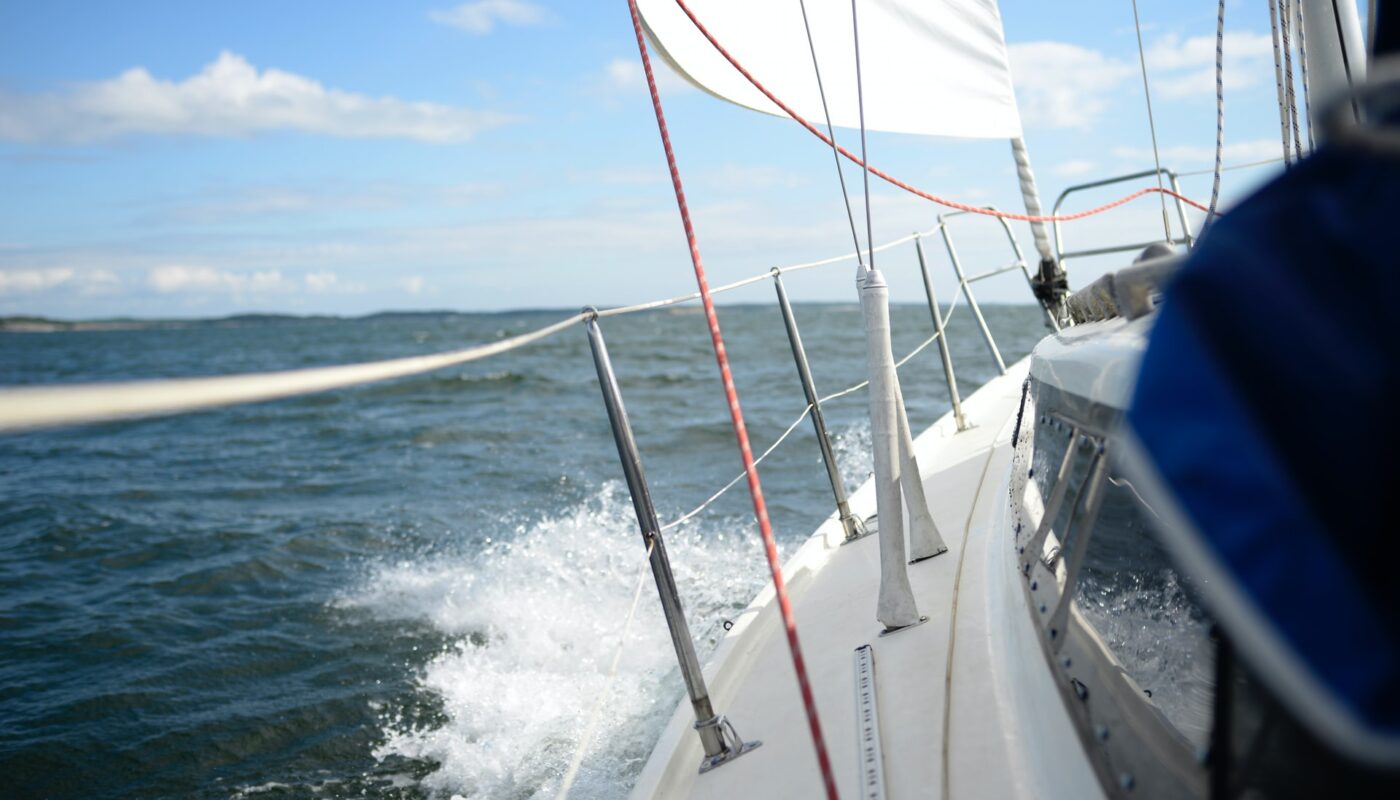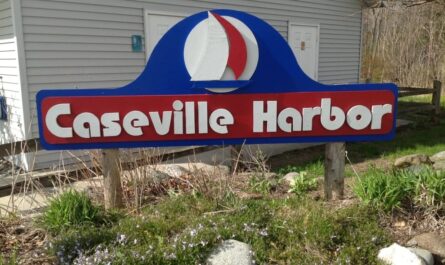Buying a sailboat, whether it’s a new sailboat or a used boat, is more than a purchase—it’s a step into a lifestyle of adventure and freedom. However, choosing the perfect boat can be daunting, especially for a first-time buyer. From assessing the price range to determining the type of boat that suits your sailing plans, each decision plays a pivotal role in making the best decision for your sailing experience. In this guide, we’ll navigate through the first seven crucial aspects to consider that will help you select the right boat, avoiding the pitfall of buying the wrong boat which could lead to a lot of work and unforeseen expenses.. Therefore, it’s crucial to ensure you buy a boat that suits your specific needs to guarantee unparalleled enjoyment and unforgettable days out. Here are vital things to consider on how to buy a sailboat:
Table of Contents
Buying a Sailboat Checklist
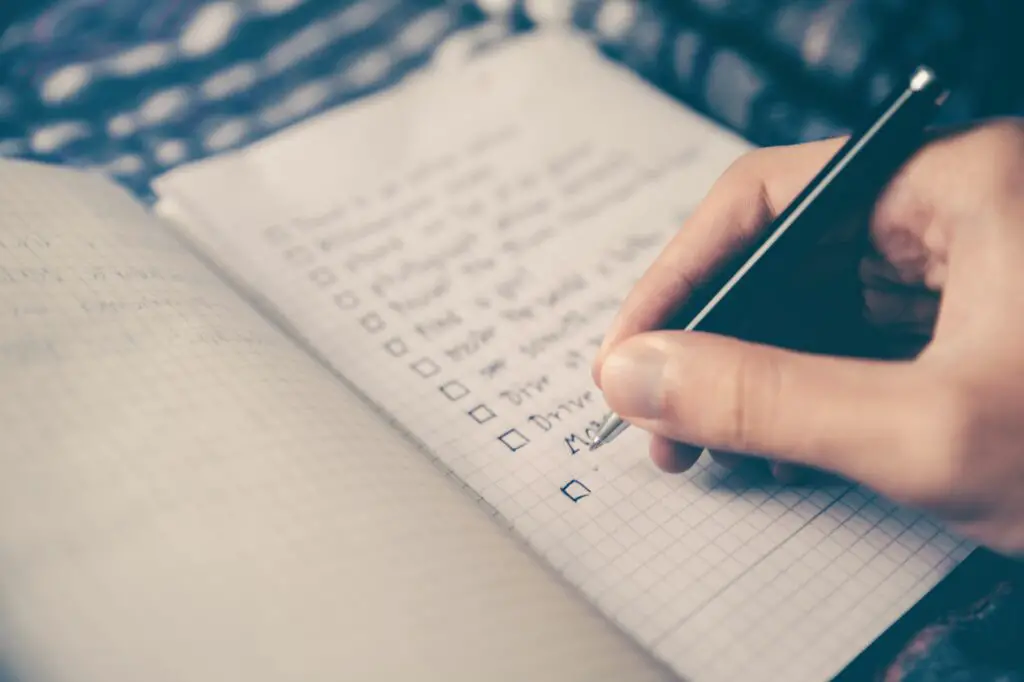
Leaping into buying a sailboat without looking at the hundreds of aspects of owning a boat is foolish. The best practice is to sit down and draft a “Buying a Sailboat Checklist” with your list of must-have, should-have, and like-to-have options and features to make the buying experience enjoyable. This will also assist you when applying for boat loans if needed. We came up with these 7 Aspects to consider when buying a sailboat checklist to assist in your decision-making process.
#1 Budget and Ongoing Costs
Before falling in love with a beautiful big boat, it’s crucial to understand not just the purchase price but also the ongoing cost that comes with boat ownership. New boats often come at a higher price but expect lower maintenance costs initially. On the other hand, a used sailboat might offer a good deal but may entail higher maintenance and upgrading costs. Understanding all related costs—from dock fees, insurance, maintenance, and much fuel the boat uses—is essential. Assessing whether it’s a good idea to opt for a boat that fits comfortably within your financial means rather than stretching for a larger boat is a general rule to follow.
#2 Type of Sailboat
The type of boat you choose is directly linked to your specific needs and sailing plans. Different types of sailboats, such as sloop rigs, cutters, or catamarans, offer varying features that can impact your sailing experience. Choosing the correct type of sailboat depends on how and where you intend to use it. For example, coastal cruising on the Great Lakes will require a different boat than blue water sailing on the open ocean.
If you are bluewater cruising or coastal cruising, you should consider a vessel that can provide everyone on board the necessary comfort and safety. However, if the primary objective is day sailing, a small boat that is easily transported with a trailer and change between waterways can be an ideal option.
#3 Size of the Sailboat
The size of the boat not only influences where you can sail—larger boats for open seas and smaller boats for inland lakes—but also impacts maintenance costs and storage decisions. Choosing the right size often means finding a balance between comfort and manageability, making it one of the most important things to consider when purchasing your first boat. You can determine the right size of sailboat to buy based on several factors, including:
- The number of people you plan to have on your sailing expeditions. Will you be cruising alone or in the company of family and friends?
- How you intend to use the sailboat. If it’s purely for entertainment, you need to ensure the size can accommodate all your guests.
- Will you live in the sailboat full-time, or will you only use it during the weekends? If you live there full time, consider getting one that’s spacious enough and with at least six feet of headroom to live comfortably. It should also have all the necessary amenities such as a full shower and kitchen.
If this is your first sailboat, it may be wise to choose a smaller model. As a beginner, handling a larger sailboat single-handedly in the open water can be difficult. Hence, it’s best to go for a smaller one that you can comfortably handle by yourself.
#4 Condition and Age of the Sailboat
When it comes to sailboats, sometimes an older boat in good condition is a better choice than a newer model that hasn’t been maintained well. Looking for signs of a well-kept boat, such as new sails and sturdy standing rigging, can save you much time and money in the long run. Hiring a professional marine surveyor can give you an expert’s insight into the boat’s condition, which is particularly crucial when buying a used sailboat. They can perform a thorough inspection and possibly a sea trial to ensure everything from the hull to the VHF radio is in working order.
#5 Construction Material
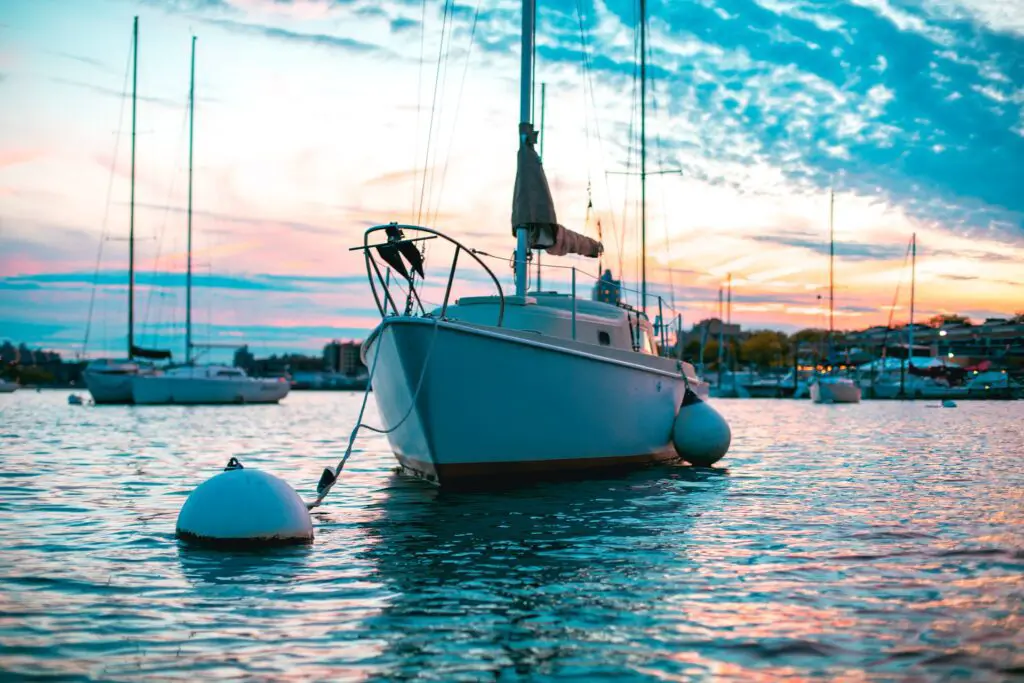
There are many different types of materials used in the constriction of sailboats. The most common ones include fiberglass, aluminum, steel, and wood.
Fiberglass is one of the most preferred construction materials for sailboats. Fiberglass sailboats are usually durable, easy to maintain, and long-lasting. Steel boats are known to be incredibly strong and durable. However, steel boats are too heavy and prone to rust. In addition, any breach of the coating requires to be dealt with promptly and adequately, making sailboat maintenance a burden for you.
Aluminum is inarguably one of the best sailboat construction materials, as it offers the perfect combination of stiffness, impact survivability, and strength-to-weight ratio. In addition, aluminum sailboats don’t require as much maintenance as steel-made ones. Wood makes a superb choice if you’re a traditional sailor. Wooden sailboats can last you for many years if well cared for. Upkeep for wooden boats is straightforward and non-toxic. However, wood requires meticulous care and specialized tools to perform.
#6 Type of Keel
As the entire boat rests on the keel, it must be strong enough to withstand different forces. It keeps your sailboat upright and prevents it from being blown sideways by strong winds. Keels come in different types and shapes. The type you choose will dictate your boat’s maneuverability and stability in heavy weather will dictate the type you choose.
Common keel types for your boat include shoal draft, centerboard, full keel, and fin keel. A full keel is usually found on bluewater sailboats, and it offers excellent stability due to its deep and heavy design. However, this can make your sailboat slower and difficult to maneuver in tight spaces and shallow waters.
The fin keel is another excellent option, especially if you want to sail fast. That’s primarily due to its narrow and lightweight design, which ensures it provides little water resistance. However, its lightweight design means it doesn’t offer the best stability.
#7 How It Is Rigged
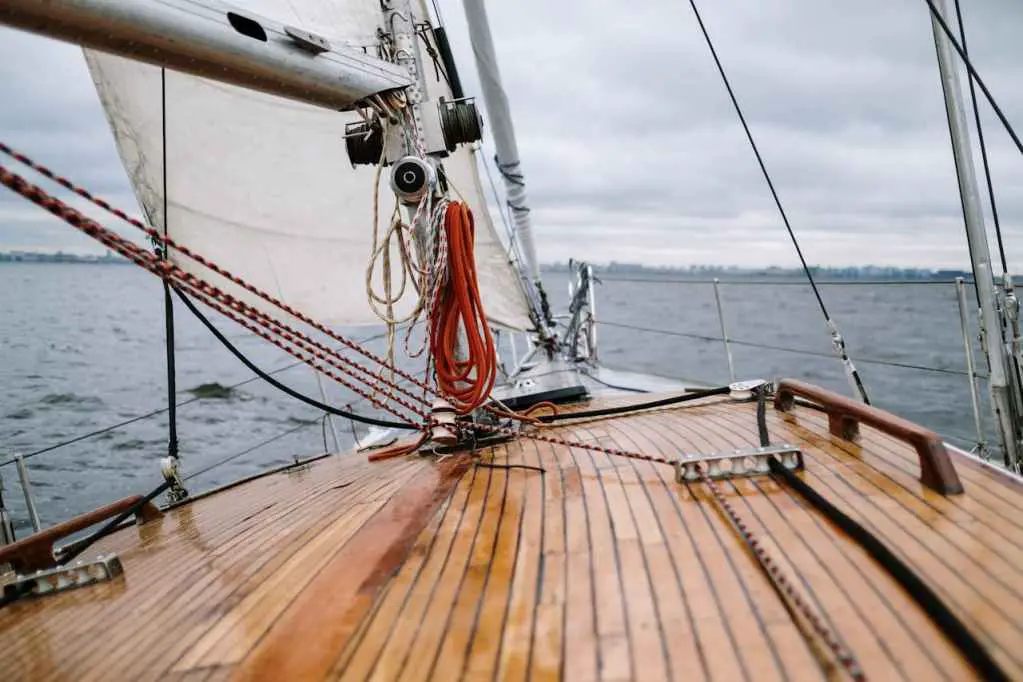
Rigging is crucial for the performance and safety of your sailboat. Sloop-rigged sailboats are the most popular type and usually feature a single mast that supports two sails. Their simple rigging arrangement makes them easy to control, making them ideal, especially for the less experienced sailors. However, your boat can also be cutter-rigged in such a way that it has a single mast but with three sails. Cutter-rigged sailboats offer improved performance and more versatility than sloop-rigged ones.
Ketch is another common type of sailboat rigging featuring two masts, with the rear one carrying the mainsail. While ketch-rigged boats appear more complex due to the additional mast, their small sails are easy to handle. Apart from choosing the best rigging, investing in professionally designed and fabricated sails by Far East Sails can dramatically improve your sailboat’s performance.
If you plan on sailing solo, look for a sailboat where all lines come back to the cockpit and are secured on lockdown or jam cleats. Look for boats with roller-furling for the jib. A roller-furling will allow you great control over the amount of sail you can deploy.
#8 Sailing Location and Storage
Your typical sailing location—whether it be offshore or on inland lakes—will dictate not only the type of boat you should choose but also the construction material and design, like a shallow draft for shallower waters. Additionally, storage is a key factor; whether you choose dry storage or a slip at a marina can affect both your ongoing cost and the boat’s longevity. Sailing location and storage are crucial in making the right choice that aligns with your lifestyle and sailing frequency.
#9 New vs. Used Sailboats
The other thing you need to consider is whether you’re purchasing a new or used sailboat. Buying a new sailboat can be the best option, especially if you know your desired features. A brand new sailboat comes ready to start sailing immediately after owning it. It also comes with a manufacturer warranty, meaning you won’t incur any additional costs in case of any problems.
Purchasing a used sailboat can be your best route if you have a limited budget. If you want a larger sailboat at a lower price, buying a used one could make that possible. The good thing about buying a used boat is that you can get one in good condition at a fraction of the cost of a new sailboat. However, most used boats may require some upgrades and repairs before you sail. It’s also less likely to get a warranty if you buy a used boat.
#10 Number of Hulls
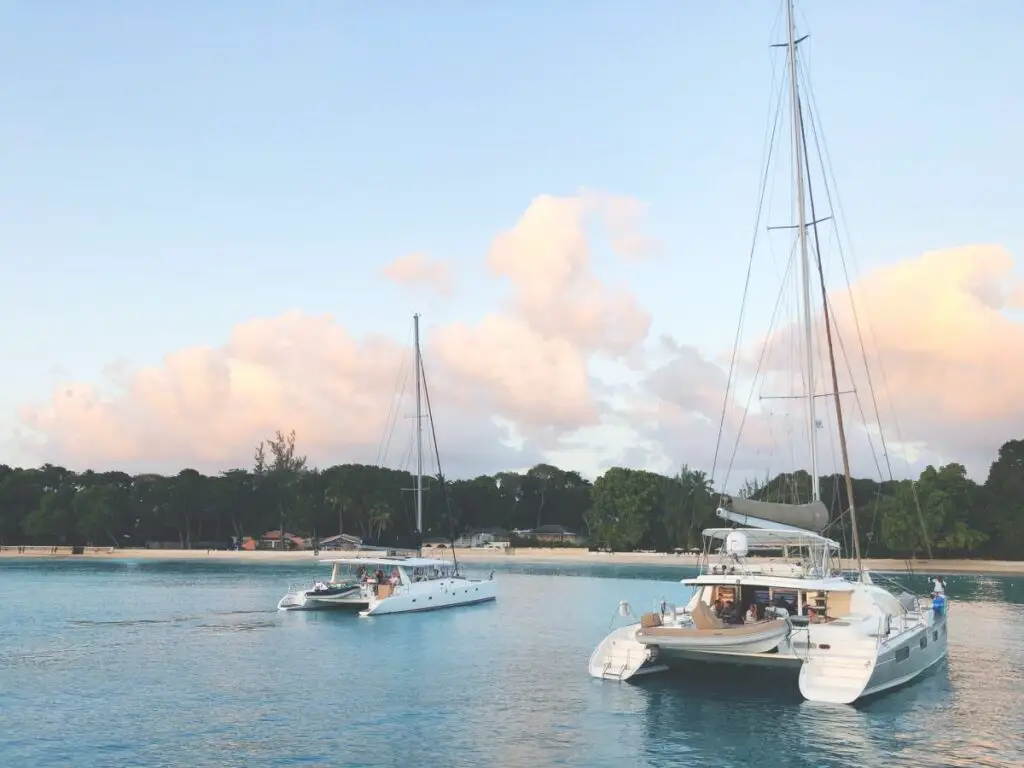
In addition to how the sailboat is rigged, consider the type of hull. Here, you can choose between monohull and multihull boats. Both types differ in shape and the number of hulls. Featuring a single hull, monohull sailboats have a heavy drift and deeper draft that makes them feel more stable in heavy seas. However, their heavy-weight designs require a lot of wind to get them moving.
On the other hand, multi-hull sailboats have two or more hulls. Common types of multi-hull sailboats include catamarans and trimarans. Catamarans feature two hulls, meaning they have a shallow draft. That makes them experience less resistance and sail faster than monohulls. Due to their shallow draft, multi-hulls tend to maneuver shallow waters more easily than monohulls. However, you might experience difficulties sailing windward with catamarans.
Trimarans feature three hulls, one in the middle and two on the sides, for increased stability. Most trimarans are wide in size, but others have foldable arms that make them smaller for easy transporting.
#11 Required Features and Equipment
Identifying the necessary features and additional equipment is critical to ensuring your safety and enjoyment while on water. Essential equipment might include a VHF radio for communication or specific rigging types like sloop rigs for certain sailing styles. Additionally, understanding what is required by law in your sailing area can prevent legal issues and ensure compliance with local regulations.
#12 Inspecting and Testing the Sailboat
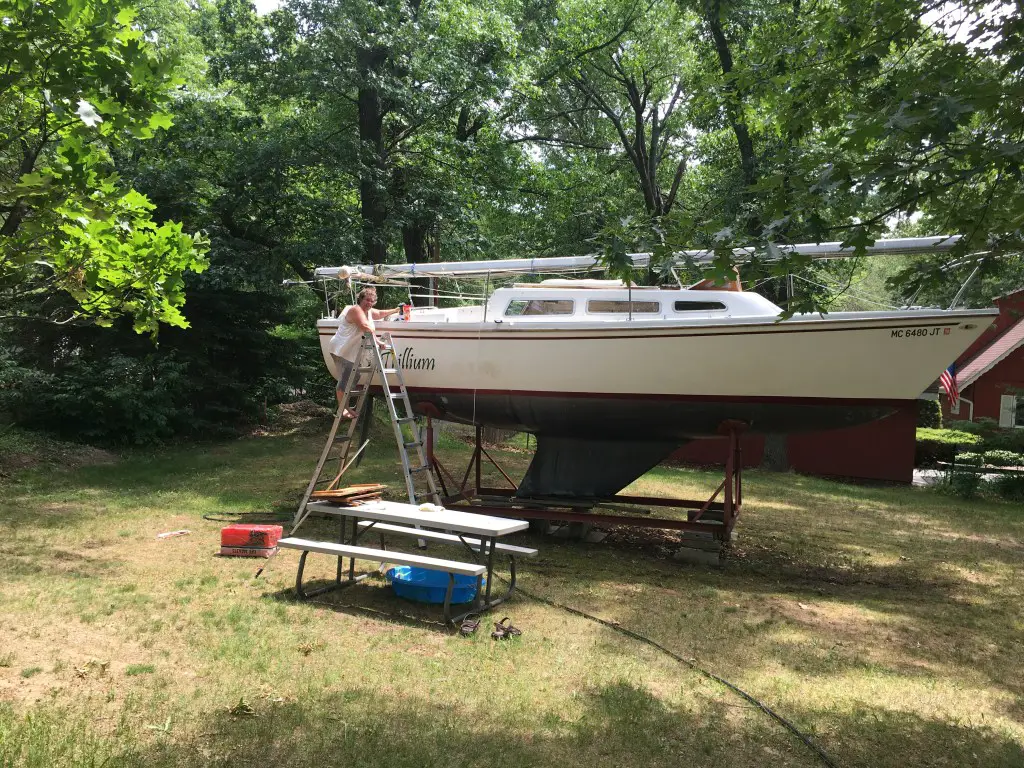
Once you’ve narrowed down your options, inspecting and testing the sailboat becomes the next critical step. This might involve checking the boat’s structural integrity, the functionality of its systems, and how well it handles on water during a sea trial. This is also the time to negotiate any repairs or modifications and to verify that the asking price aligns with the boat’s condition and market value.
#13 Legal and Documentation Issues
The final consideration in the boat buying process involves ensuring all legalities and paperwork are in order. This includes verifying that the boat has a clear title, checking for any liens against it, and ensuring compliance with registration and safety regulations. Working with reputable boat brokers can simplify this process, ensuring that all documentation is complete and correct.
Video: SAILBOAT BUYING TIPS – Part 1! A veteran surveyor gives his inside tips #sailboat
Final Thoughts on How To Buy A Sailboat
Taking these factors into consideration when buying a sailboat can help ensure you get one that best suits your specific needs and budget. Generally, you can expect to pay more for a bigger boat than a small model. This is because, besides the upfront payment, a larger boat will cost you more maintenance. You may also want to include other recurring costs of owning a sailboat in your budget.
Purchasing your own boat is an exciting venture that comes with its challenges. By considering these essential aspects, you ensure that you not only choose the perfect cruising boat but also make a wise investment into your dream boat. Remember, the best way to make a purchase this significant is by taking your time, doing thorough research, and consulting with experts in the sailing industry. Happy sailing!
Related Sailing Reading
- 5 Of The Best Sailing Movies You Can Watch Again And Again
- 11 Point Checklist Of Sailboat Maintenance On The Great Lakes
- Top 10 Lake Michigan Cruising Destinations
- 5 Essential Safety Tips When Boating & Fishing With Dogs
- Viking Great Lakes Cruises With New Ship In 2022
Discover more from Thumbwind
Subscribe to get the latest posts sent to your email.

